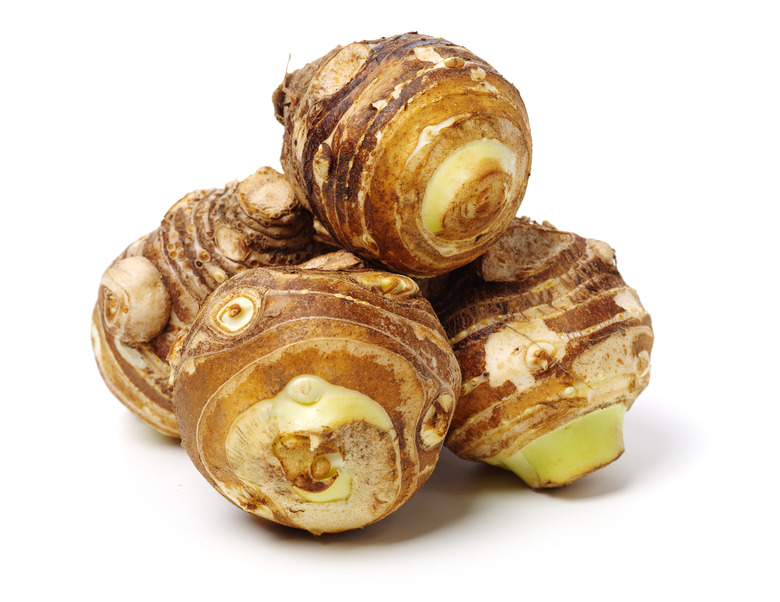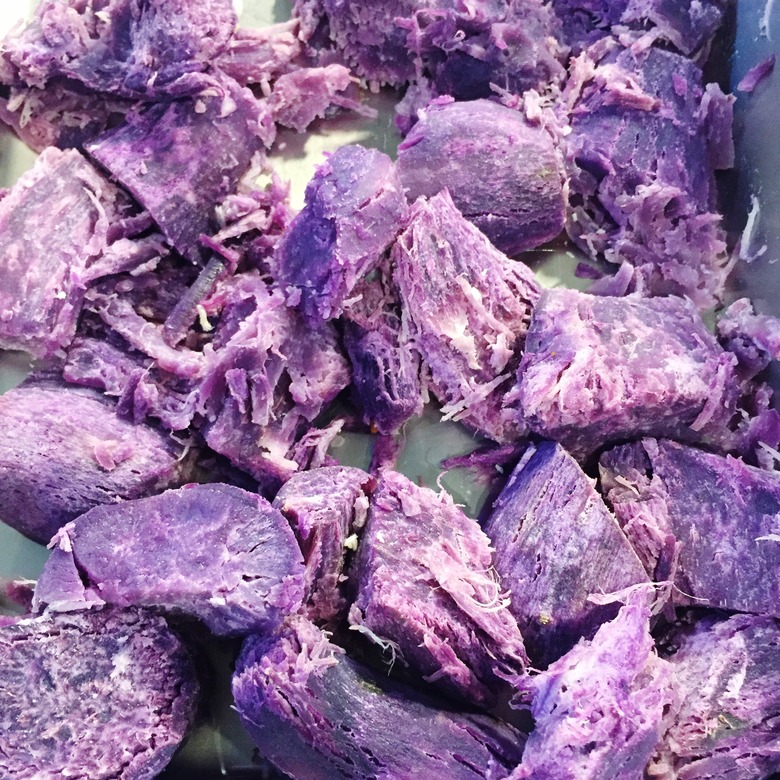Can Dogs Eat Taro Root?
Vegetables can be a great addition to your dog's diet if you feed them in appropriate amounts and steer clear of a few that are not safe for your dog to consume. For example, root vegetables like carrots, beets, sweet potatoes, and parsnips are safe to feed your dog, but what about taro root, a trendy root vegetable known as the "unfortunate-looking cousin of the potato" or the more flattering "potato of the tropics"?"
Bursting with versatility if not good looks, you can whip it up in a Hawaiian poi mash, toss chunks into soup or stew, brew it for tea, add taro paste to buns, or slice and bake for crispy taro chips.
All with one caveat — taro root must be thoroughly cooked or it's toxic to people. It contains needle-like calcium oxalate crystals, which can lead to extreme irritation in your throat and mouth causing a burning and stinging sensation. It may result in gout and kidney stones in people, and it's even more toxic to dogs.
Where does taro root come from?
Where does taro
root come from?
A culinary favorite around the world, the homely taro is touted by some for improving human health. Similar to the sweet potato, taro root is part of the taro plant native to Southeast Asia and India and is a staple in diets there as well as Africa, China, the Caribbean, and Hawaii.
A perennial, the large and herbaceous taro (Colocasia esculenta) plant is a member of the Araceae family of plants, identified by its large, heart-shaped leaves that differ in size and color. Taro roots are the underground-growing corms of the taro plant that grows up to 7-1/2 feet tall. Taro is also known as Chinese potato, cocoyam, dasheen, curcas, and dalo. Swamp taro, giant taro, and arrow leaf elephant's ear are some of the most common varieties of the taro plant.
Occurring in a variety of shapes and sizes, taro root may have purple-flecked flesh or white flesh. Starchy and prepared much like a potato; the taro root having a richer, nuttier taste than potatoes with triple the fiber. Taro is also a rich source of potassium, iron, vitamin C, and vitamin A.
But taro also contains toxic calcium oxalate crystals, hard clumps of minerals and other substances that form in the kidneys and are a major cause of kidney stones. Cooking the taro root thoroughly destroys enough of the oxalate to make the vegetable edible (wear gloves when handling as taro can irritate the skin), but not for dogs.
Can dogs eat taro root?
Can dogs eat taro root?
No, dogs should not eat taro root. Taro root is highly toxic to dogs as it contains an insoluble version of calcium oxalates, which when consumed by dogs results in symptoms such as:
- Oral irritation and pain
- Excessive drooling
- Difficulty swallowing
- Pawing at the mouth
- Vomiting
- Decreased appetite
So even if thoroughly cooked taro root is fine for you, it's not safe for your dog to eat. Consequently, keep foods like taro root, onions, garlic, chocolate, raisins, grapes, and other foods known to be toxic to dogs in an area inaccessible to your dog; for example, in a locked cupboard, pantry, or cold room, and don't share your cooked taro root with your pooch. No matter how tasty and nutritious taro root is for you, tarot root is not safe for your dog.
My dog ate taro root, what should I do?
My dog ate taro root, what should I do?
If your dog has eaten taro root and exhibiting any or all of the symptoms above, seek veterinary care immediately or call the Pet Poison Helpline (855)764-7661.
Conclusion
Conclusion
While thoroughly cooked taro root is delicious and nutritious for people, taro root is highly toxic to dogs.
You should keep taro root, raw and cooked, safely away from your dog to avoid toxicosis, irritation to the mouth and gastrointestinal tract, possible kidney damage or renal failure caused by the calcium oxalates it contains.
For more information, check out our list of everything dogs can and cannot eat.
Always check with your veterinarian before changing your pet's diet, medication, or physical activity routines. This information is not a substitute for a vet's opinion.


